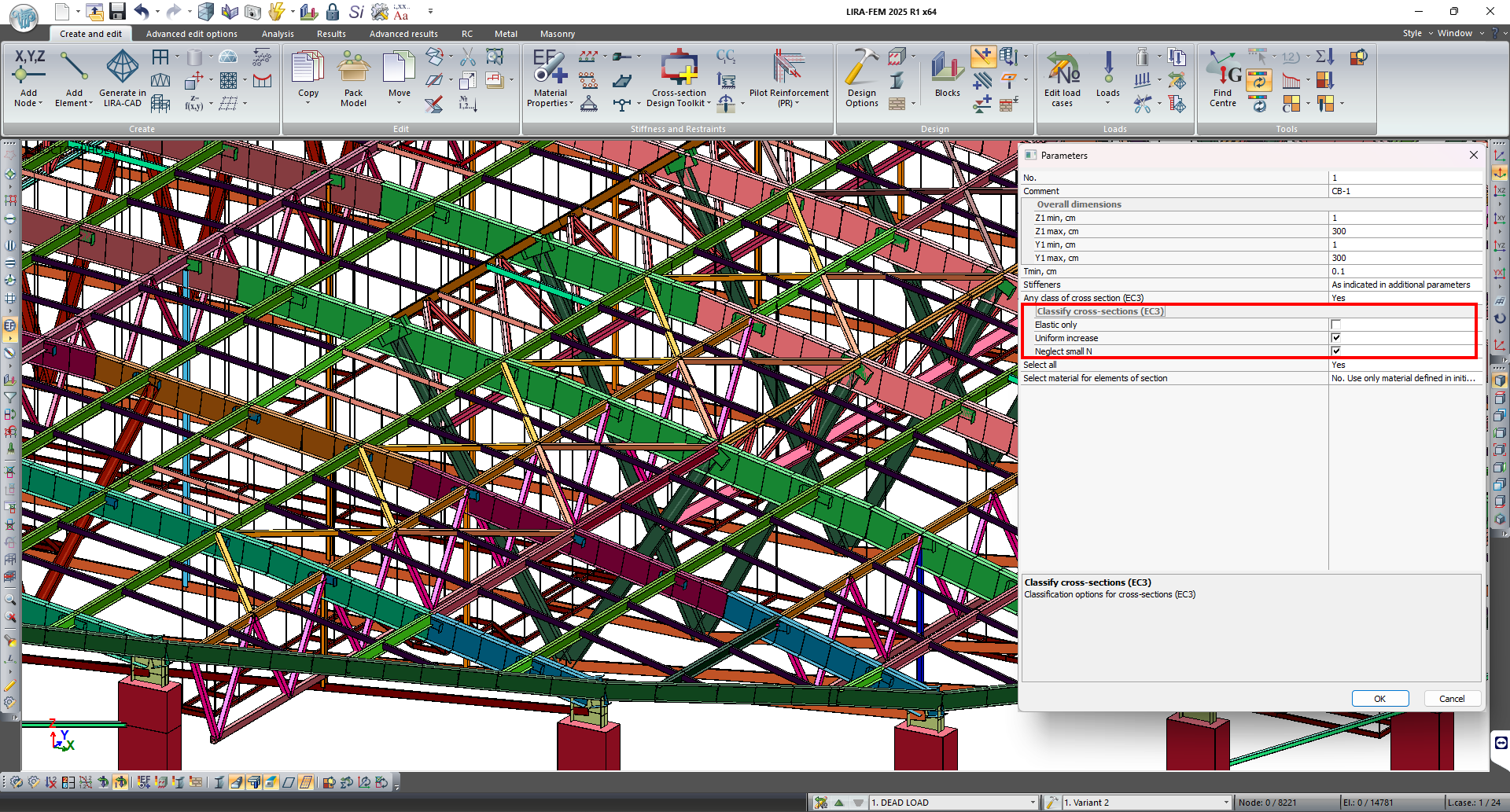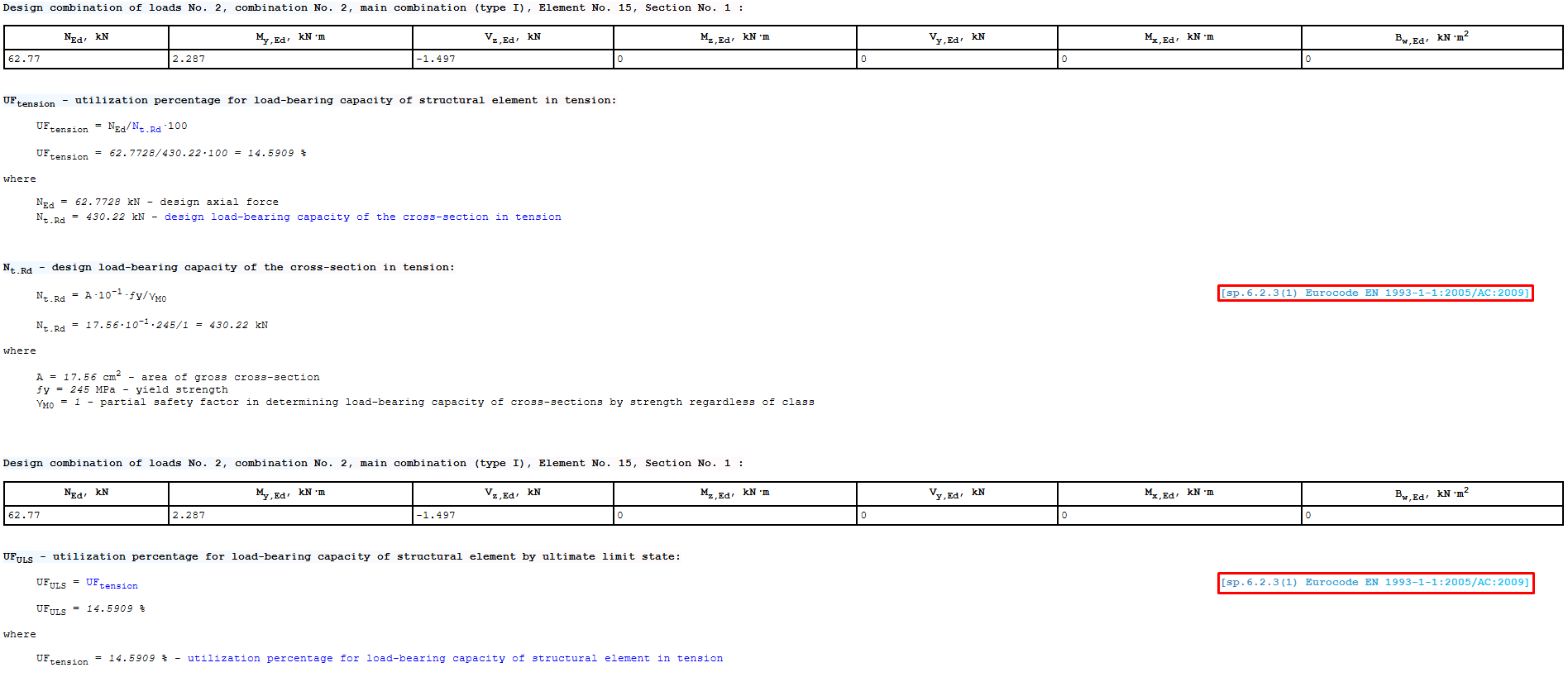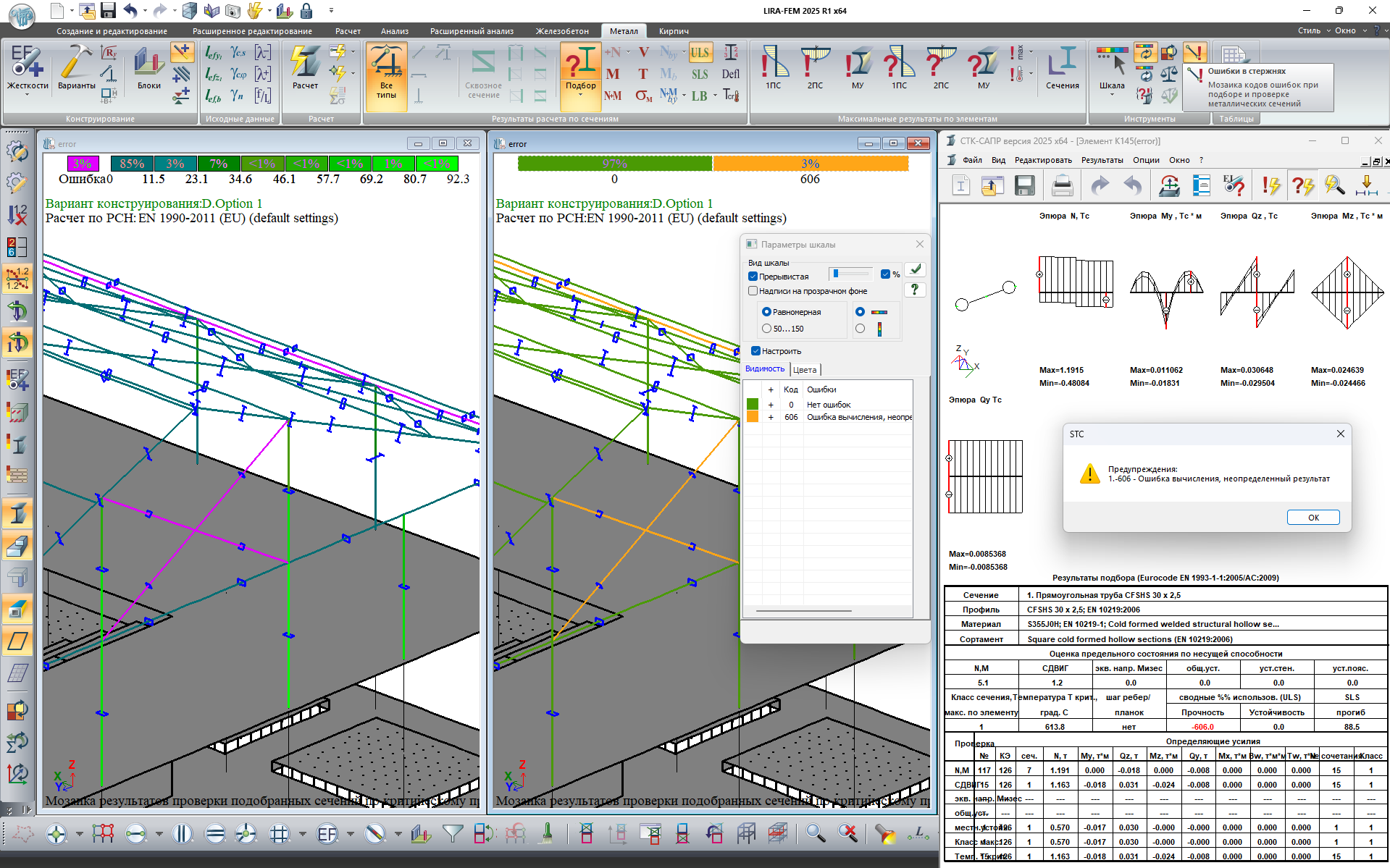VERSION HISTORY
LIRA-FEM
Analysis & design of steel structures
- To control the input data and results of the analysis of steel sections in accordance with the DBN V.2.6-:198:2014 standards, mosaic plots of cross-sectional classes have been implemented. The input data and analysis results tables have been expanded.
- A filter of steel tables by the formed groups has been added. After its application, only the steel tables from the selected groups will be displayed in the parameter assignment lists for metal sections or in the list of the Editable Steel Table system.
Steel structures
For steel elements, the local stress resulting from concentrated loads may be considered according to EN 1993-1-1:2005/AC:2009. Also, an extended method of buckling analysis of the one- and two-sided stiffeners for box and I-sections is implemented.
The new version implements a new optional way of classifying steel sections by local buckling according to Table 5.2 of EN 1993-1-1:2005/AC:2009. It is now possible to consider the partial or full plastic behaviour of the cross-sectional elements (distribution type ψ and α), whereas in earlier versions only the elastic stress distribution was taken into consideration. In this case, the forces Ned may be limited, and/or Ned, Med uniformly and proportionally increased until fyd is reached.
The tracing routine now includes references to normative documents used in the analysis. Additionally included are mosaic plots for errors based on EN 1993-1-1:2005/AC:2009. The user can comprehend the causes of unfavourable analysis results thanks to these plots.
Beam analysis with regard to the defined fixities is implemented, so in the overall stability analysis, it is possible to automatically divide the structural element into sub-elements.
For the element type Truss, the effective length may be defined and torsional buckling may be considered.
For the Single section type of unification, the restriction on the selection of steel sections is removed.
To identify errors that arise during the selection and check of metal sections, a new tool is developed. The design process is greatly accelerated by this tool, which helps the user locate and remove the errors.
For EN 1993-1-1:2005/AC:200, it is possible to check/select C-profiles with a rolled thickness of at least 4mm.
In the Metal analysis dialog box, it is now possible to define analysis of either all elements, or only elements selected on the model, or only elements included in the currently visible fragment of design model.
Steel structures
-
When opening problems saved in the version 2022, the option "Use the following over-strength value in analysis: minimal from all elements of FE model with the 'dissipative zone' parameter specified" is automatically activated.
Improvements to the module for analysis & design of steel structures
-
Tracing routine is provided for the check and selection of steel cross-sections by "Eurocode 3: Design of Steel Structures - Part 1-1 - General Rules and Rules for Buildings. May 2005. Incorporating Corrigenda February 2006 and March 2009" (hereinafter called EN 1993-1-1:2005/AC:2009) and "Eurocode 3: Design of Steel Structures. Part 1-1: General Rules and Rules for Buildings. May 2005. May 2005. Including Corrigenda February 2006 and March 2009", taking into account the national annex, (hereinafter referred to as SP RK EN 1993-1-1:2005/2011).
The file with tracing routine is generated in HTML format and you could open it in a web browser.
-
For elements subjected to warping torsion, tangential stresses t,Ed caused by lateral-torsional moment Tw,Ed is added. This option is supported in analysis by EN 1993-1-1:2005/AC:2009 and SP RK EN 1993-1-1:2005/2011.
N.B. The normal stresses w,Ed caused by the BEd bimoment (this point will be computed only for the FE type 7 in problems with the model type 6) are also taken into account in analysis of bearing capacity for elements.
-
For the SP RK EN 1993-1-1:2005/2011, check and selection of welded I-beam cross-section are carried out by analytical formulas (without reference to the steel sheet tables). So, it is possible to select the most economic cross-section according to the criterion of the lowest weight.
-
For the analysis of steel structures,it is possible to select the coefficient Ω,min not from adjacent elements, but from the whole system, including super-elements. The option may be defined in the "Analysis parameters (Metal, RC)" dialog box. N.B. Seismic energy dissipation may be taken into account as a result of plastic hysteresis behaviour of structural elements. The analysis method itself is implemented according to Section 6 "SPECIAL REGULATIONS FOR STEEL BUILDINGS", "Design of structures for earthquake resistance. Part 1. General rules, seismic actions and rules for buildings. Incorporating Corrigenda July 2009". CP RK EN 1998-1:2004/2012.
-
Responsiveness of application is enhanced during analysis of metal sections for large models. There are additional checks for analysis termination. Elements are divided between logical cores regardless of their number.
-
The user interface is updated.










